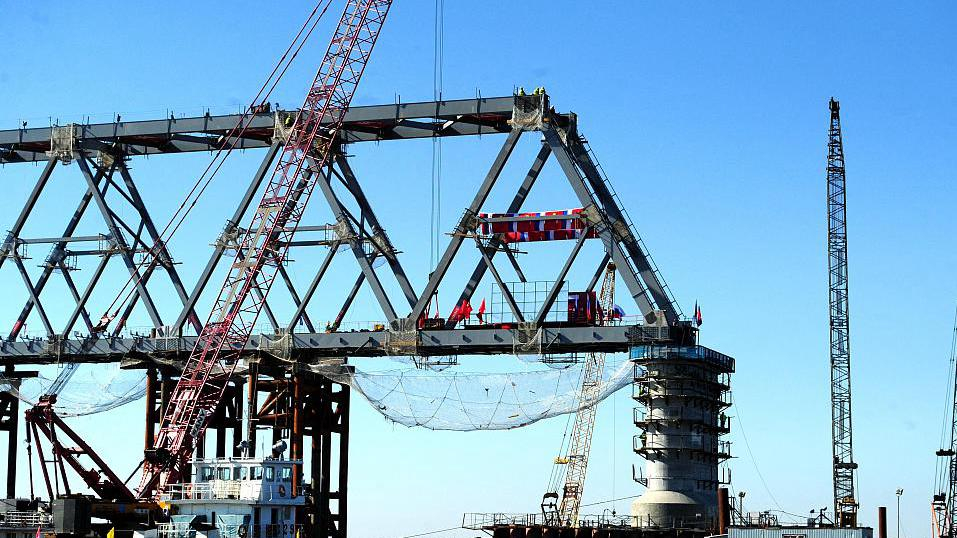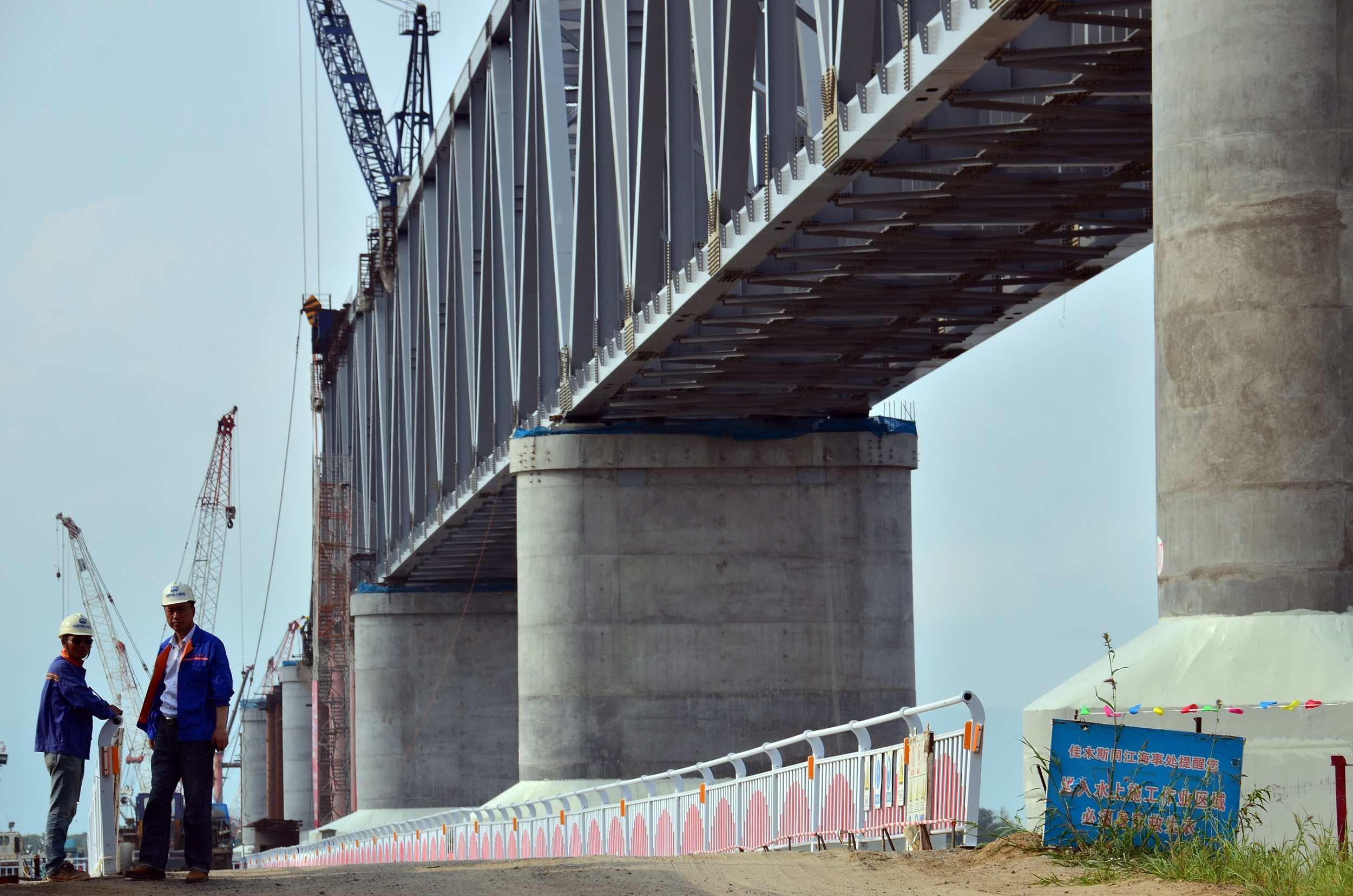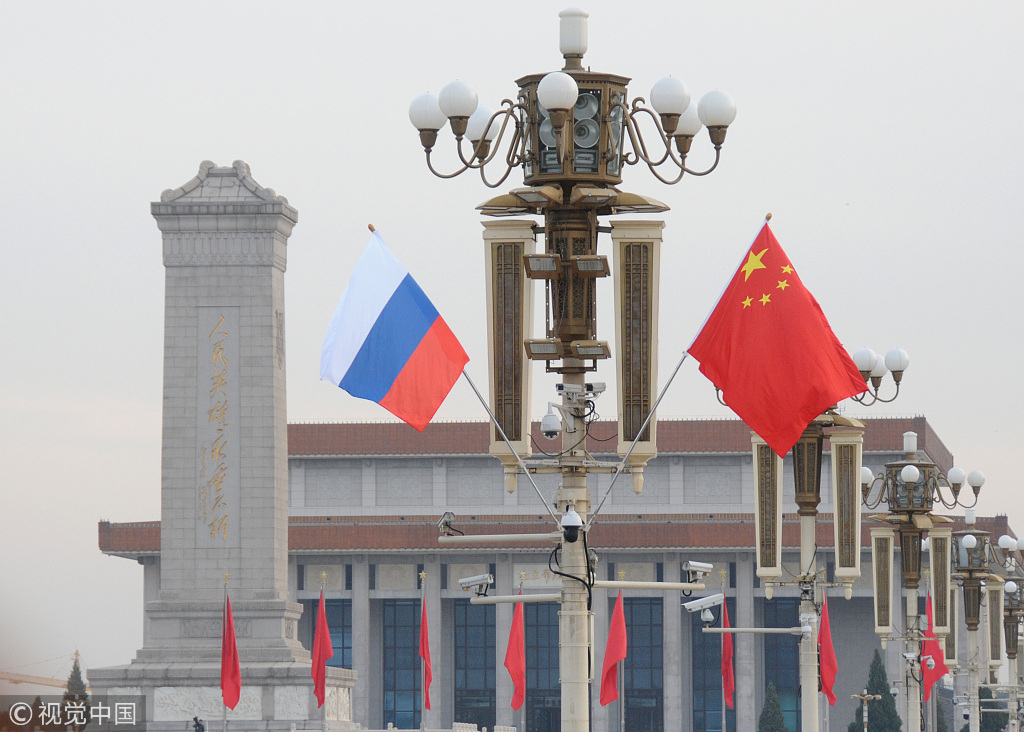
Opinion
07:58, 05-Apr-2019
Sino-Russian local cooperation enters the 'Bridge Era'
Cui Zheng

Editor's note: Cui Zheng is an associate professor at the Center for the Economies and Politics of Transitional Countries at Liaoning University in China. The article reflects the author's opinion, and not necessarily the views of CGTN.
The first cross-river railway bridge between China and Russia, which connects Tongjiang City in northeast China and Nizhneleninskoye City in the Far East of Russia is planned to be opened to traffic at the end of July this year.
It is expected to offer many development opportunities for the two countries and rolling the red carpet for the “Bridge Era” of the bilateral cooperation. As the first cross-border rail bridge, it can adapt to different specifications of rails in China and Russia.
Apart from cargo transport, it reserves the conditions for supporting passenger transport. The bridge will become an important new border crossing to promote the alignment and cooperation between the revitalization plan of northeast China and the development plan of Russia's the Far East.
The significance of the bridge
The main part of the bridge is 2215.02 meters long and has a designed annual capacity of 21 million tons. Before this Bridge, cross-border freight transportation was mainly done through waterways. However, unfavorable factors such as small cargo volume, long duration, high cost and vulnerability to bad weather were constraining the economic and trade cooperation between the two countries.

China-Russia Tongjiang Rail Bridge under construction on August 5, 2015. /VCG Photo
China-Russia Tongjiang Rail Bridge under construction on August 5, 2015. /VCG Photo
Although the construction of the China-Russia Tongjiang Rail Bridge was delayed due to the early arrival of the ice floe period, the influence of floods and other uncertainties, the successful closure of the main part of the bridge made it possible to accommodate freight traffic within the year. As the first cross-border railway bridge between China and Russia, it has taken up the vacuum of cross-border transportation under the framework of "Belt and Road (BRI)-Eurasian Economic Union" connectivity.
For China, the bridge will connect China's northeast railway network with Russia's Far East railway artery, thus forming a major international intermodal rail link that connects both Russia and Europe. It will play a major role in promoting the revitalization of northeast China by integrating the region into the joint construction of the BRI and transforming the region into a highland of opening-up and international cooperation.
Among others, the city of Tongjiang has many advantages in developing international logistics, processing import and export products, tourism and commerce and port economic and trade services.
For Russia, the opening of the bridge will reduce the export distance for selected iron ore from the Kimkan-Sutara mine[VV1] in Russia to China to the shortest possible. The bridge will become part of Russia's new export route and will provide an impetus for the creation of new logistics and industrial clusters and improve transport conditions in the Far East.
For the two countries, the technical personnel overcame many technical difficulties during the construction: innovated technologies and processes, and jointly created state-of-the-art infrastructure in the frigid region of the world. This bridge is an epitome of successful practical cooperation between the two countries.
Exemplary effect of the bridge
At a press conference held after the conclusion of China's Two Sessions in March, Chinese Premier Li Keqiang called on China and Russia to make every effort to double the bilateral trade volume in the foreseeable future.
In 2018, the Sino-Russian trade volume increased by 27.1 percent to 107 billion U.S. dollars. From January to February 2019, bilateral trade volume increased by 1.7 percent to 16 billion U.S. dollars. At present, Russia plans to expand its exports of iron ore, coal, mineral fertilizers and timber to China.

Flags of Russia and China are seen in Beijing during Russian Prime Minister Dmitry Medvedev's official visit to China, November 7, 2017. /VCG photo
Flags of Russia and China are seen in Beijing during Russian Prime Minister Dmitry Medvedev's official visit to China, November 7, 2017. /VCG photo
The development of transportation corridors, including the China-Russia Tongjiang Rail Bridge, will help speed up the shipment of goods and expand industrial cooperation between the two countries and contribute to the increase of trade volume.
There is no doubt that the closure of the main part of the China-Russia Tongjiang Rail Bridge and its opening within the year set a good example for the future cross-border cooperation between the two countries. The bridge connects the two countries not only geographically but also in terms of intention for cooperation, mutual trust and collaboration methods.
In the future cooperation between China's northeast and Russia's the Far East, China should face up to the differences in interests. While conveying the idea of mutually beneficial cooperation through the BRI, China should also understand Russia's major demand for safety, so that the bridge can better become a bridge for friendship and collaboration that brings people together.
(If you want to contribute and have specific expertise, please contact us at opinions@cgtn.com)

SITEMAP
Copyright © 2018 CGTN. Beijing ICP prepared NO.16065310-3
Copyright © 2018 CGTN. Beijing ICP prepared NO.16065310-3